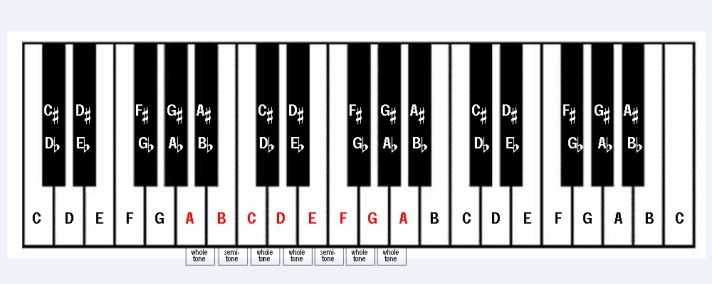Now that the subject of major keys and their scales has been covered, we can look at minor keys, how they relate to and differ from major keys, and the structure of their scales.
Before we look at the structure of minor keys and their scales, it is vital that we hear how they differ in sound. Major keys are thought of as having a happy sound while minor keys sound sad. Although this is a very simplistic and subjective description, it’s a good start. The following two sound bites are the tonic¹ triads² of C major and C minor. The C major triad sounds brighter (“happy”), while the c minor triad sounds darker (“sad”).
The crucial note in these triads is the only one that changes and in doing so dramatically alters the sound of the triad. It is the middle note – the third step of the scale, also referred to as the mediant. In a major triad the mediant is an interval of a major third up from the tonic, and in the minor triad it is a minor third up. While this is not the only note that changes when we compare a major and minor scale with the same keynote, it is the first note to define whether the scale is major or minor.
¹ Tonic: the technical name for the first step of a scale, also known as the keynote
² Triad: a chord stacked in thirds (a tonic triad is made up of the first, the third and the fifth steps of a major or minor scale
Types of minor scales
Apart from the obvious difference in sound, minor keys differ from major keys in that they are more complex, and have three types of scales for each key as opposed to just one major scale for each key. The names of the scale types are natural minor, harmonic minor and melodic minor. All three of these scale types have an unmistakably minor sound, but each follows a different sequence of intervals. What they all share in common is the first five notes of the scale with that crucial minor third interval between the keynote and the mediant.
Natural minor scales
Using the key of a minor, which has no sharps or flats in its key signature, we’ll look at and listen to the natural minor scale first. The sequence of intervals is as follows:
Step 1 – 2 (a – b): whole tone
Step 2 – 3 (b – c): semitone
Step 3 – 4 (c – d): whole tone
Step 4 – 5 (d – e): whole tone
Step 5 – 6 (e – f) semitone
Step 6 – 7 (f – g) whole tone
Step 7 – 8 (g – a) whole tone
The natural minor scale is the oldest of our three minor scale types and is also referred to as the aeolian mode. The name is taken from the music theory of Ancient Greece, and was applied to this particular scale by the Swiss music theorist, Heinrich Glarean in the mid sixteenth century. A natural minor can also be thought of as the scale of C major started on the sixth step instead of the first. On the piano keyboard it uses only white notes, and looks like this:
It is worth mentioning at this point that every major scale has a related minor key which shares its key signature The relative minor keynote is always located an interval of a minor third down from the keynote of the major key (in other words, the sixth step of the major scale). Based on this and the fact that they share the same notes, it is easy to see that C major and A minor are related. Let us now observe and listen to the scale of a natural minor on the cello.
